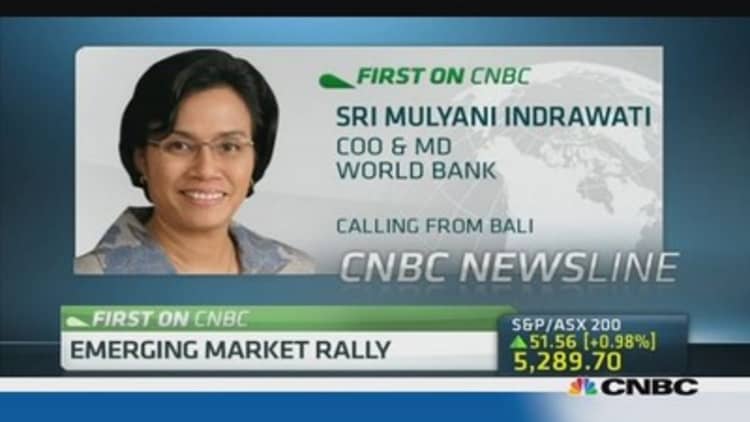Reserve Bank of India (RBI) governor Raghuram Rajan shocked markets by hiking the benchmark lending rate at his first policy review on Friday, sending a clear signal of his goal to fight inflation in Asia's third largest economy.
"The increase in the repo rate was a surprising move. This meeting set the tone for his policy leaning. It shows us that price stability is the main objective for monetary policy, even if it comes at the price of short-term growth," said Radhika Rao, economist at DBS.
The central bank raised the key repo rate by 25 basis points to 7.5 percent, defying expectations of no change to monetary policy.
It also rolled back some of the measures that had been put in place to shore up the rupee, reducing the rate at which banks borrow from the Marginal Standing Facility (MSF) rate by 75 basis points to 9.5 percent. The RBI said these policy steps will begin a cautious unwinding of "recent exceptional steps" that were introduced to stabilize the rupee in July.
(Read more: Emerging markets handed golden opportunity to restore confidence)
"The tightening impact of the rate move has been offset by the decision to roll back the liquidity tightening measures," said Daniel Martin, Asia economist at Capital Economics.
"The upshot is that Mr Rajan is presenting himself as a more hawkish governor than his predecessor. One clear implication is that further rate hikes are now a distinct possibility," he added.
Economists say the possibly and timing of another rate hike will be determined by the course of inflation. India's headline wholesale price index hit a six month high in August, driven by a surge in food prices.
Robert Prior-Wandesforde, director, Asian Economics Research at Credit Suisse said he sees a risk of one to two more repo rate hikes by March next year.
(Read more: Baptism of fire for India's new central bank chief)
The RBI's latest moves immediately rocked India's markets. The benchmark Sensex index fell as much as 2.7 percent, while the 10-year bond yield rose 23 basis points to 8.42 percent.

"Such a message is very different from the one markets seemed to have been expecting, helping to explain the 2.5% drop in equities and the big move up in bond yields," said Prior-Wandesforde. Higher interest rates typically have a negative impact on demand and hence profit margins of companies.
Meanwhile, the rupee weakened 0.4 percent against the U.S. dollar to trade around 62.05.
(Read more: RBI's Rajantakes a deep dive to save the rupee)
Strategists said the RBI will need to be careful about the pace of undwindng its liquidity tightening measures, given fragile volatile market conditions.
"If you unwind too quickly, FX markets may get the wrong message," Sajjid Chinoy, India economist, JPMorgan said on CNBC-TV 18.
By CNBC's Ansuya Harjani; Follow her on Twitter @Ansuya_H


